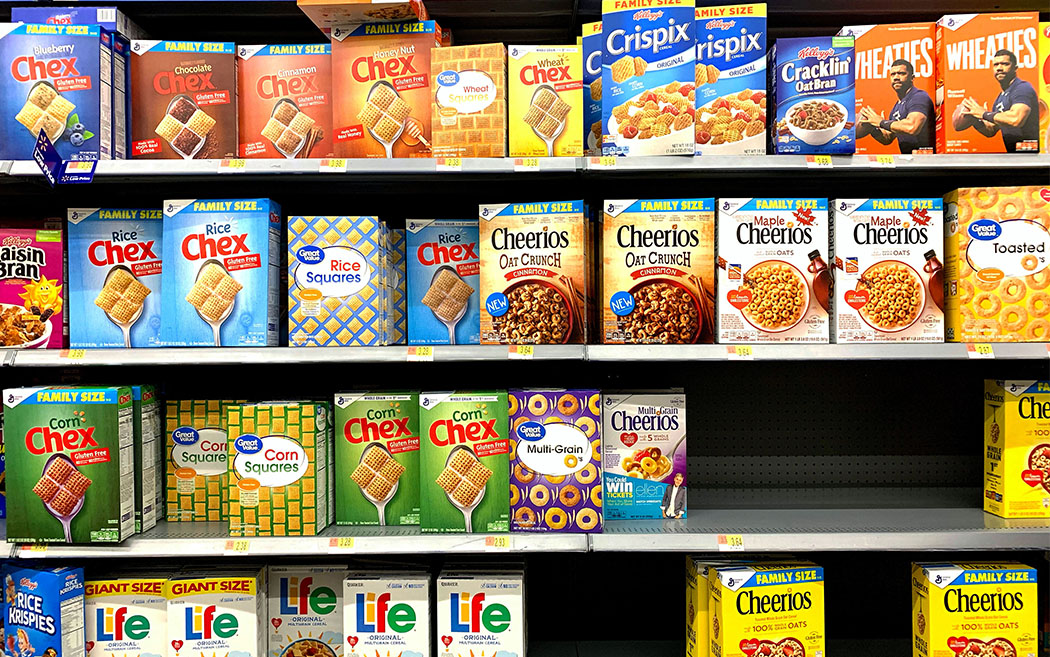Packaging and Design: How to not get lost on the shelf

Amongst many factors, branding is key in attracting and cultivating core customers. However, there’s a fine line when it comes to packaging and design. On one hand, you want your product to stand out as much as possible (especially if your product is in a heavily saturated category), but it also needs to tell a story and educate potential customers. Balancing creative assets and marketing claims is a tricky line to walk – but when done right, it can be extremely impactful.
Recently, on our podcast Beyond the Shelf, we spoke with Ross Kimbarovsky of Crowdspring – a crowd-sourced platform where small businesses have the opportunity to collaborate with hundreds of artists to create unique branding. They walked us through some of the biggest common mistakes that emerging brands make when it comes to branding. Which got us thinking, what does it truly take to make eye-catching packaging and design that not only attracts new customers but excites your core customers – and how has COVID changed things?
Balancing Aesthetic and Functionality
Now, it’s no secret that creative branding is extremely important. Your logo and packaging should not only attract customers from a distance but also tell a story. It should give a glimpse behind the curtain of what your brand is, and how your product can benefit them. Another extremely important part of packaging and design (that is often overlooked) is the hierarchy of food labels and claim language.
According to a report from Shorr, 70% of shoppers have stated that they “always” or “most of the time” read food labels when shopping. And of those shoppers, the top three assets they are paying attention to are: unique design, eco-friendly packaging, and language on the label. Knowing your core customers and identifying their needs is extremely important when adding any sort of label on your product. We recommend creating a list of all the assets you want shoppers to know. For example, is your product gluten-free? Is your product organic? Is your packaging recyclable? Do you use limited ingredients? From that list, rank which labels are most important to your customers, and identify them in that order on your packaging.
Times are Changing
Not to beat a dead horse, but obviously the past six months have completely changed how we shop. With customers going to the grocery store less frequently, and an exponential increase in demand changing stock quantities, smaller brands have to work a bit harder to catch the attention of potential customers. However, all hope is not lost. According to the report by Shorr, in the last three months 47% of shoppers have said they had purchased new products because of their packaging – and of those shoppers, 88% plan on repurchasing them.
However, as we have mentioned in our previous blog A New Normal: Food Trends on the Rise, online grocery shopping is at an all-time high. In fact, Shorr reported that 51% of shoppers have used an online grocery retailer/delivery service in the past three months. For customers, this change in behavior has proven to be quite convenient. But for brands, the pressure is on to stand out. With most site’s UI only allowing products to be shown in a small thumbnail photo, brands have to get creative with their packaging to catch the eye of customers on a scrolling platform. Fine-print is much harder to read. Food labels have to be clear and consistent. Thus, if you are selling your product online, the hierarchy of your packaging and design should in fact take this into consideration.
You may have less time to attract new customers. But by rethinking and prioritizing food labels on your packaging and design, you can stick out on the shelf – in-store and online.
To learn more about Ross Kimbarovsky’s tips for small businesses, please listen to his interview on Beyond the Shelf. And if you want to find out how a ChefsBest’s Excellence Award can help your product stand out from your competitors, contact us today.
